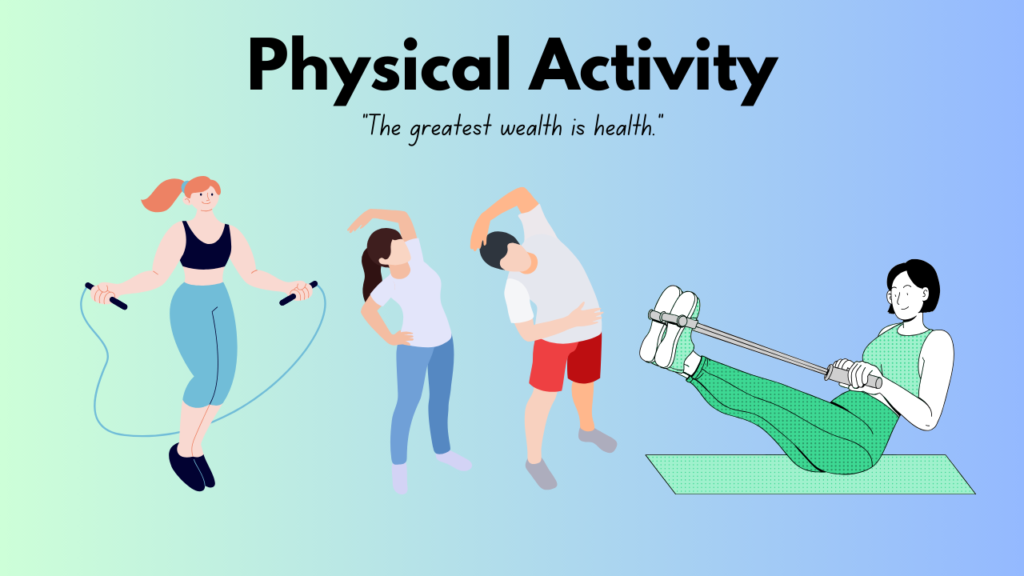The Power of Physical Activity: Enhancing Health and Well-being
In today’s fast-paced world, where technology often dominates our daily lives, the importance of physical activity cannot be overstated. Whether it’s a brisk walk in the park, a challenging session at the gym, or even dancing around the living room, engaging in physical activity is crucial for maintaining both physical and mental well-being. Let’s delve into why physical activity matters and how it can positively impact our lives.
Physical Benefits
First and foremost, regular physical activity is essential for our physical health. It strengthens muscles and bones, improves cardiovascular health, and enhances flexibility and endurance. From reducing the risk of chronic diseases like heart disease, diabetes, and certain cancers to maintaining a healthy weight and improving overall longevity, the benefits are extensive.

Engaging in activities like jogging, swimming, cycling, or even gardening promotes circulation and oxygen flow throughout the body, contributing to better overall health. These activities not only tone our muscles but also boost our metabolism, making us more efficient at burning calories and managing our weight.
Mental Well-being
Beyond the physical advantages, physical activity profoundly impacts mental health. Exercise stimulates the release of endorphins—often referred to as “feel-good hormones”—which can alleviate stress, anxiety, and depression. Many people find that physical activity provides a natural way to unwind and clear the mind after a long day.
Moreover, participating in sports or group activities fosters social connections and a sense of community, which are crucial for mental well-being. Whether it’s joining a local sports team, attending fitness classes, or simply walking with a friend, these interactions can boost self-esteem and reduce feelings of loneliness.
Cognitive Benefits
Research also suggests that physical activity enhances cognitive function. Regular exercise has been shown to improve memory, concentration, and learning capabilities. It promotes neuroplasticity—the brain’s ability to form and reorganize synaptic connections—which is essential for maintaining cognitive function as we age.
Incorporating Physical Activity into Daily Life
Incorporating physical activity into our daily routines doesn’t have to be daunting. Simple changes like taking the stairs instead of the elevator, parking farther away from the entrance, or scheduling regular breaks to stretch during sedentary work hours can make a significant difference. Finding activities that we enjoy ensures that we’re more likely to stick with them in the long term.
For those looking to establish a more structured routine, a combination of aerobic, strength training, and flexibility exercises is recommended. The key is to start gradually and listen to our bodies, gradually increasing intensity and duration as fitness levels improve.
Certainly! Here are various types of physical activities that people often engage in:
- Running/Jogging: A popular cardiovascular exercise that can be done almost anywhere with minimal equipment.
- Swimming: A full-body workout that is gentle on the joints due to the buoyancy of water.
- Cycling: Whether outdoors on a bike or indoors on a stationary bike, cycling improves cardiovascular fitness and leg strength.
- Walking: A low-impact activity that can be done at any pace and is suitable for people of all fitness levels.
- Hiking: Combines cardiovascular exercise with nature exploration, varying in intensity based on terrain.
- Strength Training: Involves using weights, resistance bands, or bodyweight exercises to build muscle strength and endurance.
- Yoga: Focuses on flexibility, balance, and relaxation through a series of poses and breathing exercises.
- Pilates: A form of exercise that emphasizes core strength, flexibility, and body awareness.
- Dancing: Whether in a structured class or casually at home, dancing is a fun way to improve cardiovascular health and coordination.
- Team Sports: Such as soccer, basketball, volleyball, or tennis, which combine physical activity with social interaction and skill development.
- Martial Arts: Includes disciplines like karate, taekwondo, judo, or Brazilian jiu-jitsu, promoting fitness, self-defense skills, and discipline.
- Gardening: While not traditionally seen as exercise, activities like digging, planting, and weeding can provide moderate physical activity.
- Kayaking/Canoeing: Water sports that offer both upper body workout and scenic exploration.
- Rock Climbing: Challenges strength, endurance, and problem-solving skills, whether indoors at a climbing gym or outdoors on natural rock faces.
- Golf: Combines walking with upper body movement and precision, although it can vary in intensity depending on the course and pace.
